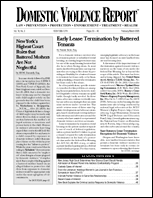Gender Equality and Prevalence of DV: What is the “Nordic Paradox”?
Author: Megan Amanda Miller.
Source: Volume 25, Number 02, December/January 2020 , pp.35-37(3)

< previous article |next article > |return to table of contents
Abstract:
In diagnosing the causes of domestic violence, researchers long believed that greater gender equality would reduce the prevalence of IPV. However, a recent study conducted by the European Union’s Agency for Fundamental Rights reveals that countries with some of the highest levels of gender equality also have some of the highest prevalence of IPV. This finding has been dubbed the “Nordic Paradox” because of the high rate of domestic violence in Scandinavian countries. Researchers have postulated many possible causes for this phenomenon. However, a threshold question to address before exploring those theories is: Did measurement bias create the Nordic Paradox? In other words, is the Nordic Paradox real, or does it result from problems within the FRA Survey itself? A group of researchers from Spain and Sweden recently addressed this question. Enrique Gracia, Manuel Martin-Fernandez, and Marisol Lila from the University of Valencia (Valencia, Spain), Juan Merlo from the University of Lund (Malmo Sweden), and Anna Karin Ivert from Malmo University found that measurement bias did not give rise to the Nordic Paradox. This article briefly describes their findings, and the background studies that set the stage for their research.Keywords: EU Agency for Fundamental Rights (FRA); Gender Equality and Violence Against Women
Affiliations:
1: Attorney at Law.